Pacific Rim (film)
8 /10 4 Votes
Release date July 12, 2013 (India) Budget 180 million USD (2013) Country United States | 7/10 IMDb Genre Action, Adventure, Sci-Fi Duration Language English | |||||||||||||||||||||||||||||||||
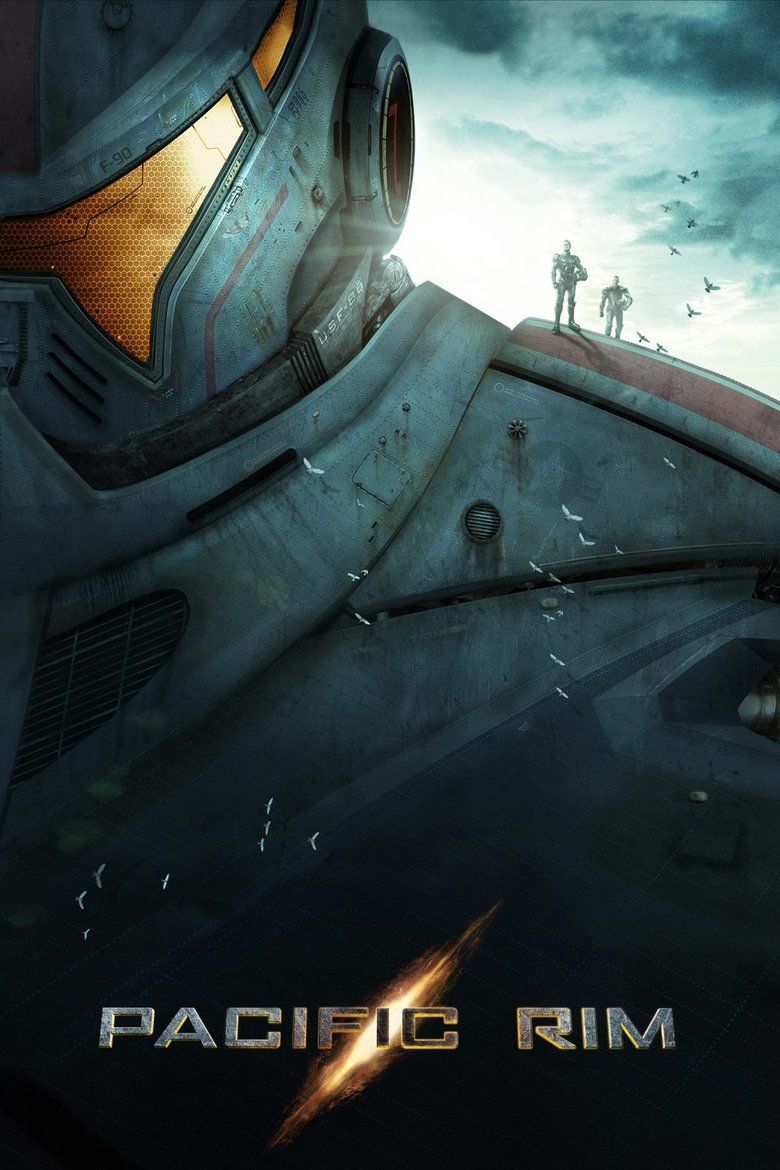 | ||||||||||||||||||||||||||||||||||
Cast (Stacker Pentecost), (Raleigh Becket), (Dr. Newton Geiszler), (Hannibal Chau), (Gottlieb), (Mako Mori) Similar movies Tagline To Fight Monsters, We Created Monsters | ||||||||||||||||||||||||||||||||||
Pacific rim official main trailer hd
Pacific Rim is a 2013 American science fiction monster film directed by Guillermo del Toro and starring Charlie Hunnam, Idris Elba, Rinko Kikuchi, Charlie Day, Burn Gorman, Robert Kazinsky, Max Martini and Ron Perlman. The screenplay was written by Travis Beacham and del Toro from a story by Beacham. The film is set in the future, when Earth is at war with the Kaiju, colossal monsters which have emerged from an interdimensional portal on the bottom of the Pacific Ocean. To combat the monsters, humanity unites to create the Jaegers, gigantic humanoid mechas each controlled by at least two pilots, whose minds are joined by a mental link. Focusing on the war's later days, the story follows Raleigh Becket, a washed-up Jaeger pilot called out of retirement and teamed with rookie pilot Mako Mori as part of a last-ditch effort to defeat the Kaiju.
Contents
- Pacific rim official main trailer hd
- Pacific rim official wondercon trailer 2013 guillermo del toro movie hd
- Plot
- Cast
- Themes
- Development
- Principal photography
- Design
- Visual effects
- Video game
- Music
- Marketing and promotion
- Release
- Box office
- Critical response
- Home media
- Sequel
- Pacific rim official trailer 1 2013 guillermo del toro movie hd
- References
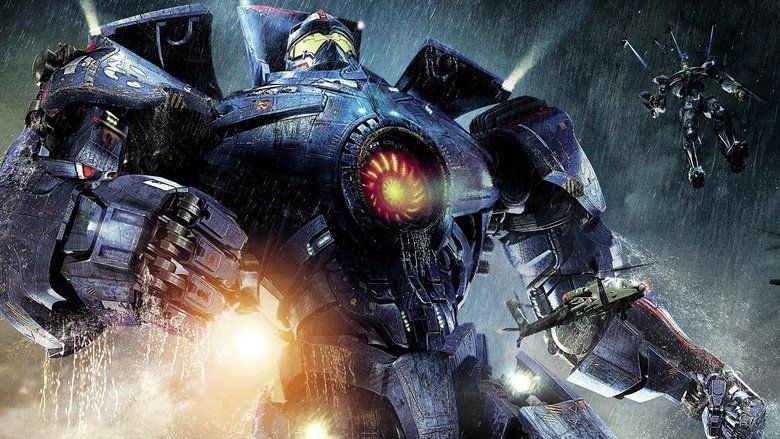
Principal photography began on November 14, 2011, in Toronto and lasted through April 2012. The film was produced by Legendary Pictures and distributed by Warner Bros. It was released on July 12, 2013, in 3D and IMAX 3D, receiving generally positive reviews; the visual effects, action sequences, and nostalgic style were highly praised. While it underperformed at the box office in the United States, it was highly successful in other markets. It earned a worldwide total of more than $411 million—$114 million in China alone, its largest market—becoming Del Toro's most commercially successful film to date.
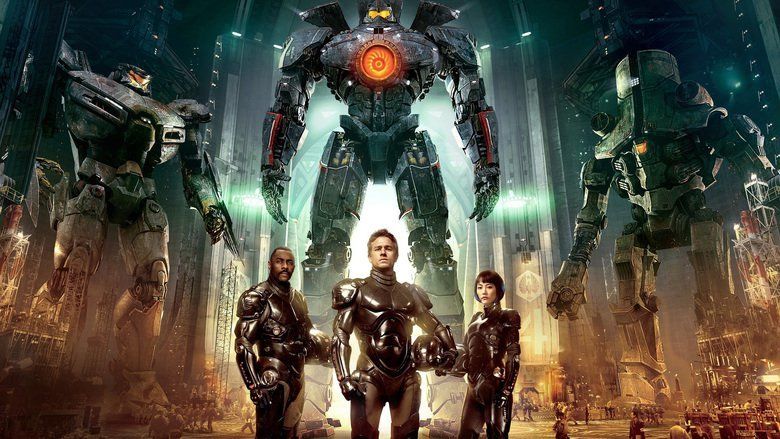
A sequel titled Pacific Rim: Uprising, directed by Steven S. DeKnight and produced by Del Toro, with Kikuchi, Day, and Gorman reprising their roles, and Universal Pictures replacing Warner Bros. is scheduled for release on March 23, 2018.
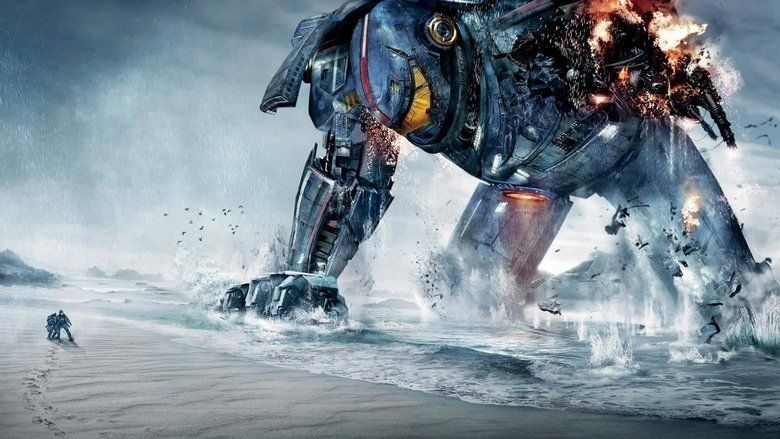
Pacific rim official wondercon trailer 2013 guillermo del toro movie hd
Plot
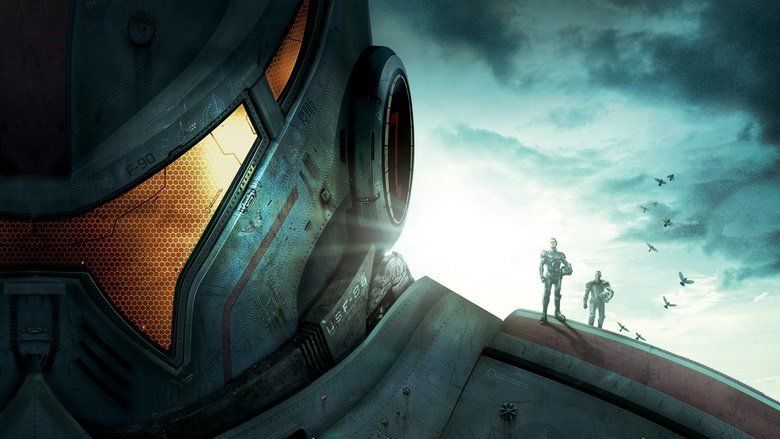
In 2013, huge alien monsters called Kaijus emerge from an interdimensional portal called "The Breach" at the bottom of the Pacific Ocean. Over the course of three years, the Kaiju wreak havoc upon coastal cities along the Ring of Fire, such as San Francisco, San José del Cabo, Sydney, Manila and Hong Kong. Humanity responds by constructing massive robotic machines called Jaegers, to combat the alien threat. Each Jaeger is piloted by two or more people, who are connected by a neural bridge in a process called "drifting" to share the mental stress of piloting the machine.

In 2020, Gipsy Danger, piloted by brothers Raleigh and Yancy Beckett, defends Anchorage from a Kaiju codenamed Knifehead. They both engage in combat, with Gipsy gaining the upper hand and defeating the Kaiju. Unknown to them, the Kaiju is still alive. The Kaiju ambushes them, critically damages Gipsy and throws Yancy out of the cockpit, killing him. Raleigh manages to pilot Gipsy alone, activating the remaining plasma cannon and killing Knifehead. Traumatized by Yancy’s death, Raleigh quits the Jaeger Program. In 2025, the world governments decide to end funding for the continuous construction of Jaegers, in favor of building massive coastal walls, as the Kaijus are growing more powerful, their attacks more frequent and Jaegers are being destroyed faster than they are built. The remaining Jaegers are relocated to Hong Kong under the command of Marshal Stacker Pentecost, who plans to destroy The Breach using a nuclear weapon.
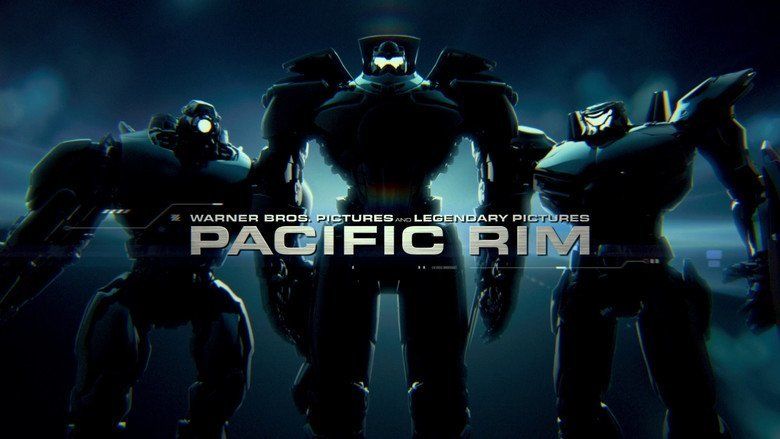
Pentecost tracks down Raleigh at a wall construction site to persuade him to rejoin the program. Traveling to the Hong Kong base, the Shatterdome, Raleigh is introduced to Mako Mori, director of the Jaeger restoration program and Pentecost’s adoptive daughter. Four Jaegers remain in operation – the refurbished Gipsy Danger, the Russian Cherno Alpha, the Chinese Crimson Typhoon, and the Australian Striker Eureka that will carry the bomb, and piloted by father and son Herc and Chuck Hansen.
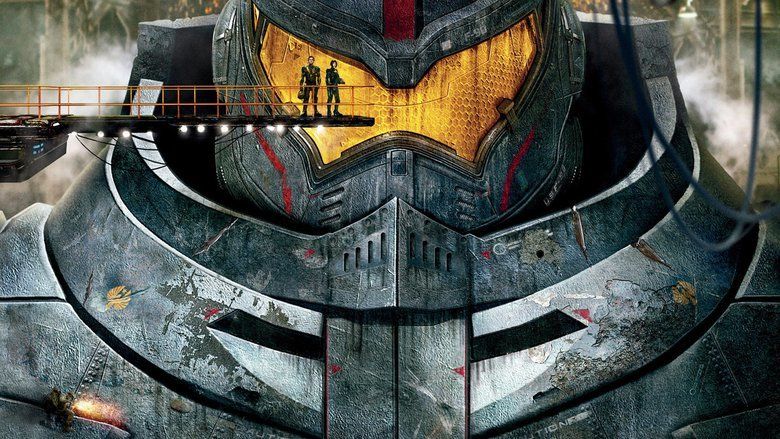
To find a new co-pilot, Raleigh participates in tryouts, assuming Mako is "drift-compatible", despite Pentecost's protests. During their first test, Raleigh is distracted by the memory of Yancy’s death. Mako, in turn, is lost in the memory of the Kaiju attack on Tokyo that orphaned her, and nearly fires Gipsy's plasma cannon. Mako is promptly relieved of piloting duties, and Raleigh confronts Pentecost and tells him that he is being overprotective of her.
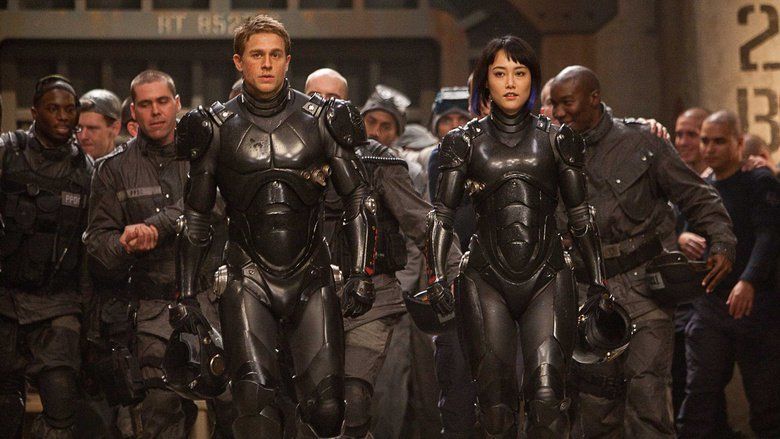
Pentecost consults Kaiju experts Newton Geiszler and Herman Gottlieb. Hermann claims that the Breach will stabilize and the Kaiju will increase in number, but it will allow the assault to succeed, while Newton suggests drifting with a Kaiju’s brain to learn more about them. Newton goes ahead with his plan despite Herman's protests and discovers that the Kaiju are bioweapons grown by alien colonists who plan on wiping out humanity. With Pentecost's permission, Newton searches for black market dealer Hannibal Chau to obtain a fresher Kaiju brain to drift with. However, he soon figures out that since drifting is a two-way link, the Kaiju hive mind gained access to his knowledge just as he did theirs. Soon after, two new Kaijus, Leatherback and Otachi, emerge simultaneously to find Newton.
All Jaegers except Gipsy Danger are dispatched to intervene. Otachi destroys Crimson Typhoon, while Leatherback destroys Cherno Alpha and paralyzes Striker Eureka with an EMP blast. Out of options, Pentecost reluctantly allows Mako and Raleigh to pilot Gipsy Danger. Gipsy successfully kills Leatherback and Otachi, while almost destroying Hong Kong in the process. Examining Otachi's body, Newton and Hannibal find out that it is pregnant. The infant Kaiju bursts out and devours Hannibal but soon dies from being strangled by its own umbilical cord. Newton and Hermann drift with the infant’s brain, discovering that The Breach can only open in the presence of a Kaiju's DNA.
As Herc was injured during the previous fight, Pentecost pilots Striker Eureka with Chuck. Along with Gipsy Danger, they approach The Breach. Three Kaijus emerge from The Breach to defend it, one being the largest ever encountered. The Jaegers kill one Kaiju and injure the others, but Striker is immobilized by the largest Kaiju. Pentecost and Chuck decide to detonate the bomb, as they were easily overwhelmed, depending on Gipsy's nuclear reactor to seal The Breach. After the explosion leaves the largest Kaiju alive, Gipsy kills it and rides its corpse into The Breach. Raleigh overloads the reactor and ejects Mako and himself using escape pods. The reactor explodes, killing several alien creatures and destroying The Breach. Herc, now the Marshal, orders the war clock to stop, indicating mankind's victory.
Raleigh and Mako's escape pods surface in the Pacific Ocean, where they embrace as rescue helicopters arrive.
In a scene at the beginning of the credits, Hannibal cuts his way out of the Kaiju infant, and looks for his lost shoe.
Cast
Additional Jaeger pilots include Charles Luu, Lance Luu and Mark Luu as the Wei Tang triplets (China), and Robert Maillet and Heather Doerksen as Sasha and Aleksis Kaidanovsky (Russia). Joe Pingue portrays Captain Merrit, the captain of a fishing boat caught in a battle between Jaeger and Kaiju. Santiago Segura plays an aide to Hannibal Chau. Brad William Henke and Larry Joe Campbell portray members of a construction team Raleigh joins after retiring from the Pan Pacific Defense Corps. Robin Thomas, Julian Barnes, and David Richmond-Peck portray U.N. representatives from the United States, Great Britain, and Canada respectively. Sebastian Pigott appears as a Jaeger engineer and Joshua Peace appears as an officer, Jonathan Foxon appears as a frantic civilian. David Fox plays an old man on a beach, while Jane Watson portrays Raleigh and Yancy's mother in a flashback sequence. Producer Thomas Tull makes a cameo appearance.
Themes
In the film, a Jaeger's neural load is too much for a single pilot to handle alone, meaning they must first be psychically linked to another pilot—a concept called "drifting". When pilots drift, they quickly gain intimate knowledge of each other's memories and feelings, and have no choice but to accept them; del Toro found this concept's dramatic potential compelling. The director expressed his intention that the empathy metaphors extend to real life:
The pilots' smaller stories actually make a bigger point, which is that we're all together in the same robot [in life]… Either we get along or we die. I didn't want this to be a recruitment ad or anything jingoistic. The idea of the movie is just for us to trust each other, to cross over barriers of color, sex, beliefs, whatever, and just stick together.
Del Toro acknowledged this message's simplicity, but said he would have liked to have seen adventure films with similar morals when he was a child. The film's ten primary characters all have "little arcs" conducive to this idea; del Toro stated: "I think that's a great message to give kids... 'That guy you were beating the shit out of ten minutes ago? That's the guy you have to work with five minutes later.' That's life... We can only be complete when we work together." The director noted that Hellboy and The Devil's Backbone told the same message, though the latter conveyed it in a very different way.
The film centers on the relationship between Becket and Mori, but is not a love story in a conventional sense. Both are deeply damaged human beings who have decided to suppress their respective traumas. While learning to pilot their Jaeger, they undergo a process of "opening up", gaining access to each other's thoughts, memories and secrets. Their relationship is necessarily one of respect and "perfect trust". Hunnam commented that the film is "a love story without a love story. It's about all of the necessary elements of love without arriving at love itself". Both Becket and Mori have suffered profound personal tragedies; one of the script's central ideas is that two damaged people can metaphorically "become one", with their figurative missing pieces connecting almost like a puzzle. Del Toro emphasized the characters' emotional intimacy by filming their training fight scene the way he would a sex scene.
Del Toro, a self-described pacifist, avoided what he termed "car commercial aesthetics" or "army recruitment video aesthetics", and gave the characters Western ranks including "marshal" and "ranger" rather than military ranks such as "captain", "major" or "general". The director stated: "I avoided making any kind of message that says war is good. We have enough firepower in the world." Del Toro wanted to break from the mass death and destruction featured in contemporary blockbuster films, and made a point of showing the streets and buildings being evacuated before Kaiju attacks, ensuring that the destruction depicted is "completely remorseless". The director stated:
I don't want people being crushed. I want the joy that I used to get seeing Godzilla toss a tank without having to think there are guys in the tank… What I think is you could do nothing but echo the moment you're in. There is a global anxiety about how fragile the status quo is and the safety of citizens, but in my mind—honestly—this film is in another realm. There is no correlation to the real world. There is no fear of a copycat Kaiju attack because a Kaiju saw it on the news and said, "I'm going to destroy Seattle." In my case, I'm picking up a tradition. One that started right after World War II and was a coping mechanism, in a way, for Japan to heal the wounds of that war. And it's integral for a Kaiju to rampage in the city.
Writing for the Los Angeles Review of Books, Wai Chee Dimock connected the film's central theme of togetherness to its recurring image of missing shoes, stating the "utopian dream" driving the characters is
that puny humans like us could be "together"—not only in the specific neural melding that must take place between the two Jaeger co-pilots but also, more generally speaking, in a fractal web of resemblance, filling the world with copies of ourselves at varying orders of magnitude and with varying degrees of re-expression, beginning with the shoes on our feet.
Development
In February 2006, it was reported that Guillermo del Toro would direct Travis Beacham's fantasy screenplay, Killing on Carnival Row, but the project never materialized. Beacham conceived Pacific Rim the following year. While walking on the beach near Santa Monica Pier, the screenwriter imagined a giant robot and a giant monster fighting to the death. "They just sort of materialized out of the fog, these vast, godlike things." He later conceived the idea that each robot had two pilots, asking "what happens when one of those people dies?" Deciding this would be "a story about loss, moving on after loss, and dealing with survivor's guilt", Beacham commenced writing the film. On May 28, 2010, it was reported that Legendary Pictures had purchased Beacham's detailed 25-page film treatment, now titled Pacific Rim.
On July 28, 2010, it was reported that del Toro would next direct an adaptation of H. P. Lovecraft's At the Mountains of Madness for Universal Studios, with James Cameron producing. When del Toro met with Legendary Pictures to discuss the possibility of collaborating with them on a film, he was intrigued by Beacham's treatment—still a "very small pitch" at this point. Del Toro struck a deal with Legendary: while directing At the Mountains of Madness, he would produce and co-write Pacific Rim; because of the films' conflicting production schedules, he would direct Pacific Rim only if At the Mountains of Madness were cancelled. Tom Cruise was attached to star in the Lovecraft adaptation.
On March 7, 2011, it was reported that Universal would not proceed with At the Mountains of Madness because del Toro was unwilling to compromise on the $150 million budget and R rating. The director later reflected, "When it happened, this has never happened to me, but I actually cried that weekend a lot. I don't want to sound like a puny soul, but I really was devastated. I was weeping for the movie." The project collapsed on a Friday, and del Toro signed to direct Pacific Rim the following Monday.
Del Toro spent a year working with Beacham on the screenplay, and is credited as co-writer. He introduced ideas he had always wished to see in the genre, such as a Kaiju birth and a Kaiju attack seen from a child's perspective. The script also received an uncredited rewrite from Neil Cross, who previously created the Idris Elba-starring drama series Luther and wrote the del Toro-produced horror film Mama. Patrick Melton and Marcus Dunstan were enlisted to perform uncredited rewrites when their spec script Monstropolis caught the filmmaker's attention. Drew Pearce also carried out uncredited work on the script.
Principal photography
Filming began on November 14, 2011, and continued in Toronto into April 2012. Del Toro gave an update after the second week on filming finished. The film was referred to as Silent Seas and Still Seas during production.
Del Toro had never shot a film in less than 115 days, but had only 103 to shoot Pacific Rim. In order to achieve this, del Toro scheduled a splinter unit that he could direct early in the day, before main unit, and on his off-days. The director worked 17 to 18 hours a day, seven days a week, for much of the schedule. Del Toro took a new approach to directing actors, allowing "looser" movements and improvisation; the director maintained tight control over the production: "Everything, 100% goes through me sooner or later. I do not delegate anything. Some people like it, some people don't, but it has to be done that way."
The film was shot using Red Epic cameras. At first Guillermo del Toro decided not to shoot or convert the film to 3D, as the effect would not work due to the sheer size of the film's robots and monsters, explaining
I didn't want to make the movie 3D because when you have things that big... the thing that happens naturally, you're looking at two buildings lets say at 300 feet [away], if you move there is no parallax. They're so big that, in 3D, you barely notice anything no matter how fast you move... To force the 3D effects for robots and monsters that are supposed to be big you are making their [perspective] miniaturized, making them human scale.
It was later announced that the film would be converted to 3D, with the conversion taking 40 weeks longer than most. Del Toro said: "What can I tell you? I changed my mind. I'm not running for office. I can do a Romney."
Del Toro cut approximately an hour of material from the film. The unused footage explored the characters and their arcs in greater detail, but the director felt it was necessary to strike a balance, stating: "We cannot pretend this is Ibsen with monsters and giant robots. I cannot pretend I'm doing a profound reflection on mankind." Each character's arc was edited down to its minimal requirements. The director wanted to keep the film around two hours, particularly for younger viewers. Alejandro González Iñárritu and Alfonso Cuarón helped with the editing; Iñárritu removed ten minutes of footage, while Cuarón removed "a few minutes" and rearranged several scenes. Iñárritu and Cuarón receive a "special thanks" in the film's end credits, as do James Cameron and David Cronenberg.
Design
Del Toro envisioned Pacific Rim as an earnest, colorful adventure story, with an "incredibly airy and light feel", in contrast to the "super-brooding, super-dark, cynical summer movie". The director focused on "big, beautiful, sophisticated visuals" and action that would satisfy an adult audience, but has stated his "real hope" is to introduce the Kaiju and mecha genres to a generation of children. While the film draws heavily on these genres, it avoids direct references to previous works. Del Toro intended to create something original but "madly in love" with its influences, instilled with "epic beauty" and "operatic grandeur". The end credits dedicate the film to Ray Harryhausen and Ishirō Honda, who helped to establish the giant monster genre with films such as The Beast from 20,000 Fathoms and Godzilla respectively.
The film was to honor the Kaiju and mecha genres while creating an original stand-alone film, something "conscious of the heritage, but not a pastiche or an homage or a greatest hits of everything". The director made a point of starting from scratch, without emulating or referencing any previous examples of those genres. He cautioned his designers not to turn to films like Gamera, Godzilla, or The War of the Gargantuas for inspiration, stating: "I didn't want to be postmodern, or referential, or just belong to a genre. I really wanted to create something new, something madly in love with those things. I tried to bring epic beauty to it, and drama and operatic grandeur." Rather than popular culture, he drew inspiration from works of art such as The Colossus and George Bellows's boxing paintings. The film's designers include Wayne Barlowe, Oscar Chichoni, monster sculptors David Meng and Simon Lee, and Hellboy II and The Hobbit designer Francisco Ruiz Velasco. Del Toro has acknowledged that some designs created for his cancelled At the Mountains of Madness adaptation may have been used in Pacific Rim.
Approximately one hundred Kaiju and one hundred Jaegers were designed, but only a fraction of these appear in the film; every week the filmmakers would "do an American Idol" and vote for the best. In designing Kaiju, the film's artists frequently drew inspiration from nature rather than other works. The director commented: "Kaijus are essentially outlandish in a way, but on the other hand they come sort of in families: you've got the reptilian Kaiju, the insect Kaiju, the sort of crustacean Kaiju... So to take an outlandish design and then render it with an attention to real animal anatomy and detail is interesting." Del Toro avoided making the Kaiju too similar to any Earth creatures, instead opting to make them otherworldly and alien. Del Toro called the film's Kaiju "weapons", stating that they are "the cleaning crew, the cats sent into the warehouse to clean out the mice." Certain design elements are shared by all the Kaiju; this is intended to suggest that they are connected and were designed for a similar purpose. Each Kaiju was given a vaguely humanoid silhouette to echo the man-in-suit aesthetic of early Japanese Kaiju films. While del Toro's other films feature ancient or damaged monsters, the Kaiju lack scars or any evidence of prior culture, indicating that they are engineered creations rather than the result of an evolutionary system.
Knifehead, the first Kaiju to appear in the film, is a tribute to the plodding kaiju of 1960s Japanese films, and is intended to look almost like a man in a rubber suit; its head was inspired by that of a goblin shark. Leatherback, the bouncer-like Kaiju which spews electro-magnetic charges, is a favorite of del Toro, who conceived it as a "brawler with this sort of beer belly"; the lumbering movements of gorillas were used as a reference. The Kaiju Otachi homages the dragons of Chinese mythology. The director called it a "Swiss army knife of a Kaiju"; with almost 20 minutes of screen time, it was given numerous features so the audience would not tire of it. The creature moves like a Komodo dragon in water, sports multiple jaws and an acid-filled neck sack, and unfurls wings when necessary. It is also more intelligent than the other Kaiju, employing eagle-inspired strategies against the Jaegers. Onibaba, the Kaiju that orphans Mako Mori, resembles a fusion of a Japanese temple and a crustacean. Slattern, the largest Kaiju, is distinguished by its extremely long neck and "half-horn, half-crown" head, which del Toro considered both demonic and majestic.
Gipsy Danger, the American Jaeger, was based on the shape of New York City's Art Deco buildings, such as the Chrysler Building and the Empire State Building, but infused with John Wayne's gunslinger gait and hip movements. Cherno Alpha, the Russian Jaeger, was based on the shape and paint patterns of a T-series Russian tank, combined with a giant containment silo to give the appearance of a walking nuclear power plant with a cooling tower on its head. Crimson Typhoon, the three-armed Chinese Jaeger, is piloted by triplets and resembles a "medieval little warrior"; its texture evokes Chinese lacquered wood with golden edges. Striker Eureka, the Australian Jaeger, is likened by del Toro to a Land Rover; the most elegant and masculine Jaeger, it has a jutting chest, a camouflage paint scheme recalling the Australian outback, and the bravado of its pilots.
The film's costumes were designed by Shane Mahan and Kate Hawley, who spent several months on the costumes of the Jaeger pilots. The Russian pilot suits are old-fashioned and echo cosmonaut space suits.
Visual effects
Industrial Light & Magic was chosen to the visual effects for Pacific Rim. Del Toro hired Oscar winners John Knoll and Hal T. Hickel, both known for their work on the Star Wars prequel trilogy and the Pirates of the Caribbean films. Legacy Effects co-owner Shane Mahan, known for creating the armored suits for Iron Man, was tasked with building the suits, helmets and conn-pods. Oscar winner Clay Pinney, known for his work on Independence Day and Star Trek, was also brought on board. Hybride Technologies, a division of Ubisoft, and Rodeo FX also contributed to the visual effects.
Del Toro conceived the film as an operatic work:
That was one of the first words I said to the entire team at ILM. I said, "This movie needs to be theatrical, operatic, romantic." We used a lot of words not usually associated with high-tech blockbusters ... We went for a very, very, very, very saturated color palette for the battle for Hong Kong. I kept asking John to tap into his inner Mexican and be able to saturate the greens and the purples and the pinks and the oranges.
The classic Japanese woodblock print The Great Wave off Kanagawa by Hokusai was a common motif in the ocean battles; Del Toro recalled, "I would say 'Give me a Hokusai wave'… we use the waves and weather in the movie very operatically." The director asked that Knoll not necessarily match the lighting from shot to shot: "It's pretty unorthodox to do that, but I think the results are really beautiful and very artistically free and powerful, not something you would associate with a big sci-fi action movie." Del Toro considers the film's digital water its most exciting visual effect: "The water dynamics in this movie are technically beautiful, but also artistically incredibly expressive. We agreed on making the water become almost another character. We would time the water very precisely. I'd say 'Get out of the wave [on this frame].'"
The film also features extensive miniature effect shots provided by 32TEN Studios, under the supervision of ILM VFX Producer Susan Greenhow and ILM VFX Supervisors John Knoll and Lindy DeQuattro. Shot using RED Epic cameras on 3D rigs, the scenes produced by 32TEN involved the creation of a ¼ scale office building interior which was destroyed by the fist of a Jaeger robot which was on a separate pneumatically controlled rig, as well as a sequence which depicted several rows of seats in a soccer stadium being blown apart as a Jaeger lands in the stadium, which was created by using ¼-scale seats blown apart by air cannons. Additionally 32TEN provided several practical elements for ILM’s compositing team including dust clouds, breaking glass and water effects.
Video game
A single-player fighting video game based on the film was announced by the Australian Classification Board for Xbox 360 and PlayStation 3. Published and developed by Yuke's, Pacific Rim: The Video Game was released along with the film on July 12, 2013. The game received generally negative reviews. Reliance Games developed a Pacific Rim tie-in game for smartphone platforms, such as iOS and Android devices; this version also received negative reviews.
Music
The film's score was composed by Ramin Djawadi. Del Toro selected Djawadi based on his works on Prison Break, Iron Man, and Game of Thrones, stating: "His scores have a grandeur, but they have also an incredible sort of human soul." The director also stated that some Russian rap would be featured in the film. The soundtrack was released on digital download from Amazon on June 18, 2013, and CD on June 25, 2013. The physical version of the soundtrack was released on July 9, 2013, by WaterTower Music, three days before the theatrical release of the film itself. Guest musicians Tom Morello and Priscilla Ahn also feature as soloists on the score. Two songs appear in the film which are not included on the soundtrack are "Just Like Your Tenderness" by Luo Xiaoxuan, and the ending theme "Drift", performed by Blake Perlman featuring Rza. The OST received mostly positive reviews. The Action Elite rated the album with a perfect five stars, the Empire gave four, while MSN and Filmtracks also gave the soundtrack four out of five stars. On July 27, 2013, the soundtrack was appeared at peak position number 7 on "US Billboard Top Soundtracks."
Marketing and promotion
On November 28, 2012, the official film website premiered alongside two viral videos—one depicting the initial Kaiju attack as captured by a handheld camera. Blueprints depicting the designs for the Jaeger machines were also released online. On June 5, 2013, the graphic novel Pacific Rim: Tales from Year Zero was released. Written by Travis Beacham and featuring cover art by Alex Ross, Tales from Year Zero serves as an introductory prologue to the film, and is set twelve years before its events. On June 18, Insight Editions published Pacific Rim: Man, Machines, and Monsters, an art book written by David S. Cohen. The book chronicles the film's production with concept art, photography, the cast and crew's accounts of the shoot, and a foreword by del Toro. On July 2, a viral video was released in which Ron Perlman's character, Hannibal Chau, advertises his fictional Kaiju organ dealership, Kaiju Remedies.
On the day of the film's release, July 12, 2013, another viral video was released to promote the film. It involved the collaboration of the film studio (including del Toro himself) and the YouTube network Polaris (also known as The Game Station). It featured members of the YouTube network (such as the Game Grumps) as Jaeger pilots fighting Kaiju. On July 16, a novelization by Alex Irvine was released. NECA began selling action figures of the film's Kaiju and Jaegers.
Release
Pacific Rim was initially expected to reach theaters in July 2012. However, Warner Bros. decided to postpone the film's release date to May 10, 2013. In March 2012, it was announced that the film would be released on July 12, 2013. The film premiered in Mexico City on July 1, 2013.
Box office
Pacific Rim grossed $101.8 million in North America, and has had a favorable international release, grossing $309.2 million in other countries, for a worldwide total of $411,002,906.
The film grossed $3.6 million from Thursday night showings, 23 percent of which came from IMAX showings. It then faced competition from Grown Ups 2 and ultimately fell behind it on opening day, earning $14.6 million. The film reached the #3 spot during the opening weekend with $37.2 million, behind Despicable Me 2 and Grown Ups 2. This is the highest ever opening for a film by del Toro, surpassing Hellboy II: The Golden Army. Around 50 percent of tickets were in 3D, which makes it the second highest 3D share of 2013, behind Gravity. During its second weekend, the film dropped a steep 57% with a gross of $16 million, and during its third weekend, had dropped a further 52% with a gross of $7.7 million.
On July 22, 2013, it was reported that the film had reached #1 at the international box office over the weekend. The film had a successful opening in China, grossing $45.2 million, until overtaken by The Hobbit: The Battle of the Five Armies the largest opening in China for a Warner Bros. title, and the sixth-largest Chinese debut of all time for any Hollywood film. On August 19, 2013, its gross crossed $100 million in China alone, becoming the sixth-highest grossing American film ever in China. It grossed a total of $114.3 million in the country, making China the largest market for the film. In Japan, the film landed in the fifth position on opening weekend, with an initial earning of $3 million (behind World War Z's gross of $3.4 million).
In September 2013, Forbes highlighted Pacific Rim as "the rare English-language film in history to cross $400 million while barely crossing $100 million domestic".
Critical response
Pacific Rim received generally positive reviews from critics. Review aggregation website Metacritic gives a rating of 64 out of 100 based on reviews from 48 critics, which indicates "generally favorable" reviews. The review aggregator website Rotten Tomatoes reported a 71% approval rating with an average rating of 6.7/10 based on 259 reviews. The website's consensus reads, "It may sport more style than substance, but Pacific Rim is a solid modern creature feature bolstered by fantastical imagery and an irresistible sense of fun."
The Daily Telegraph's Robbie Collin awarded the film five stars out of five, likening the experience of watching it to rediscovering a favorite childhood cartoon. He praised del Toro for investing his own affection for the genre and sense of artistry into the project in such a way that the viewer found themselves immersed in the film rather than watching from afar, noting the director had catered to younger and older audiences alike and expressed surprise that the film could rise above the sum of its parts. Todd McCarthy of The Hollywood Reporter gave a positive review, describing the film as the sum of the potential every monster film had ever tried to fulfill. Lou Lumenick of The New York Post gave the film four stars out of four, and said it had "no shortage of brains, brawn, eye candy, wit and even some poetry", praising the "clean and coherent" action sequences and the "terrific chemistry" between Hunnam and Kikuchi. Drew McWeeny of HitFix highlighted other aspects of the film, paying particular attention to the production and art design. He also praised the cinematography for "perfectly capturing" the film, and described the score as "ridiculously cool". Rolling Stone's Peter Travers called the film "the work of a humanist ready to banish cynicism for compassion", saying that del Toro "drives the action with a heartbeat". Keith Uhlich of Time Out called the film "pure, pleasurable comic-book absurdity", and noted that del Toro had lent the proceedings a "plausible humanity" lacking in most of summer 2013's destruction-heavy blockbusters. He said the Kaijus' civilian victims make a "palpably personal impression", deeming one scene with Mako Mori "as mythically moving as anything in the mecha anime, like Neon Genesis Evangelion, that the director emulates with expert aplomb." The Village Voice's Stephanie Zacharek called it "summer entertainment with a pulse", praising its "dumbly brilliant" action and freedom from elitism, but noted the story is predictable and suggested del Toro's time would be better spent on more visionary films. Angela Watercutter of Wired called it the "most awesome movie of the summer", a "fist-pumping, awe-inspiring ride", and opined that its focus on spectacle rather than characterization "simply does not matter" in the summer blockbuster context. Richard Roeper gave the film a B, commenting that either the Jaegers or Kaiju "can take down any of the Transformers." Leonard Maltin gave the film two-and-a-half out of four stars, calling it "three-quarters of a really good movie that doesn't know when to quit."
The Guardian's Andrew Pulver was less enthusiastic, calling the film a mix of "wafer-thin psychodrama" and "plot-generator dialogue". Time's Richard Corliss said the action was let down by "inert" drama, describing the film as "45 minutes of awesome encased in 90 minutes of yawnsome." Justin Chang of Variety criticized it as loud and lacking the nuance and subtlety of del Toro's previous films. The New Yorker's Anthony Lane's verdict read as "It is possible to applaud Pacific Rim for the efficacy of its business model while deploring the tale that has been engendered — long, loud, dark, and very wet. You might as well watch the birth of an elephant." The San Francisco Chronicle's Mike LaSalle reacted extremely negatively by stating "If this is the best we can do in terms of movies - if something like this can speak to the soul of audiences - maybe we should just turn over the cameras and the equipment to the alien dinosaurs and see what they come up with... Director Guillermo del Toro, who gave us Pan's Labyrinth not too many years ago, used to be known as an artistic and discerning filmmaker, despite his affection for blockbuster action and grotesqueness. But too often he gets lost in his computer...Why go to the movies to look at somebody else's computer after looking at your own all week?... The actors can't make Pacific Rim any better. They can only relieve some of the pain." Slant Magazine's Ed Gonzalez, who said the film lacked poignancy, compared it to a video game: "a stylish but programmatic ride toward an inevitable final boss battle". The Wrap's Alonso Duralde criticized the choice to set most battles at night or during the rain, feeling it detracted from the action, and said the comic relief actors—Day, Gorman, and Perlman—stole the film from the less interesting leads. Jordan Hoffman of Film.com identified Hunnam as the weak link in the cast, calling him a "charisma black hole". Giles Hardie of The Sydney Morning Herald was particularly critical of the film, awarding the action sequences "five IQ points out of five" as he described the film as an hour and twenty minutes of fight sequences vaguely connected by ten minutes of story.
Director Rian Johnson praised the film, as did Japanese game director Hideo Kojima, who called it the "ultimate otaku film" and stated he "never imagined [he] would be fortunate enough to see a film like this in [his] life". Go Nagai, who pioneered the idea of mecha piloted from an interior cockpit, praised the film's fun and intense action, while game developer Fumito Ueda said its battle scenes surpassed memories of the tokusatsu films he saw as an impressionable child. Science fiction author William Gibson called the film "A ravishing display of intelligent, often wonderfully witty visual design, every frame alive with coherent language, in the service of what is at heart a children's story... A baroque that doesn't curdle, that never fetishizes itself."
The inclusion of only one female character of note resulted in Pacific Rim not passing the Bechdel test. This became a topic of discussion in the media and on the Internet. Opinions were divided between those pointing to the film as an example of Hollywood's practice of ostracizing women, and those noting that the film did not sexually objectify Mako Mori and gave her a narrative arc not revolving around a man.
Home media
Pacific Rim became available for download on the iTunes Store and Vudu on October 1, 2013. The film was released on DVD and Blu-ray Disc in the USA on October 15, 2013, and in the UK and other countries on November 25, 2013. A collector's edition was also available on the same date. To help promote the home media release, Bryan Harley and Roque Rodriguez of Fresno, California, produced a "sweded" version of the film's Gipsy Danger vs. Otachi battle scene, after del Toro was impressed by the duo's "sweded" trailer released on YouTube in March 2013. As of March 2014, Pacific Rim has sold 961,845 DVDs along with 1,427,692 Blu-ray discs in the United States for $10,045,530 and $24,634,992 in revenue respectively for a total of $37,079,122.
Sequel
A sequel titled Pacific Rim: Uprising is currently scheduled for release on March 23, 2018.
Pacific rim official trailer 1 2013 guillermo del toro movie hd
References
Pacific Rim (film) WikipediaPacific Rim (film) IMDb Pacific Rim (film) themoviedb.org
